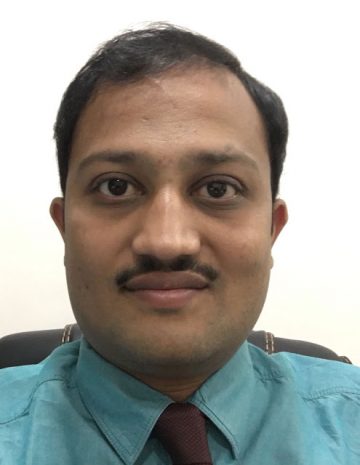
Dr. Ashutosh Ajri
Education: MBBS, D.ORTHO, DNB. ORTHO, MNAMS,
Fellowship in shoulder and sports injuries ( Germany) ( South Korea)
Specialities: Shoulder and Sports injuries Surgeon
OPD Days: Tue, Thur & Sat
Work Timing: 10 AM – 1 PM
FAQ
Arthroscopic surgery is a minimally invasive surgical procedure used to diagnose and treat problems within a joint. It is performed using an arthroscope, a thin, flexible tube with a camera and light on the end, which is inserted into the joint through a small incision. The surgeon can then view the inside of the joint and perform the necessary repairs using small instruments.
Arthroscopic techniques can be used to treat various shoulder conditions, including rotator cuff tears, shoulder impingement syndrome, shoulder instability, and shoulder joint degeneration. Some of the specific shoulder surgeries that can be performed using arthroscopy include rotator cuff repair, shoulder debridement, labral repair, and thermal capsulorrhaphy.
The length of hospital stay after shoulder arthroscopy varies depending on the individual patient and the type of surgery performed. In most cases, patients can go home on the same day as the procedure, but some may require an overnight stay.
The length of an arthroscopic shoulder surgery varies depending on the type of procedure being performed and the extent of the condition being treated. On average, most arthroscopic shoulder surgeries last between 30 minutes and two hours. Complex procedures, such as rotator cuff repairs, can take longer, sometimes up to three hours or more.
Whether or not you will awake during arthroscopic shoulder surgery depends on the type of anesthesia being used and your medical situation. In some cases, patients may receive local anesthesia, which numbs the shoulder and arm, and they will be awake during the procedure. In other cases, general anesthesia may be used, which puts you to sleep during the surgery. Your surgeon and anesthesia provider will discuss the best option for you and your procedure.
Pain after arthroscopic shoulder surgery can vary from person to person, but most patients experience some discomfort, soreness, and stiffness in the shoulder. Your surgeon will prescribe pain medications to help manage your pain and ensure a comfortable recovery. Over-the-counter pain relievers, such as acetaminophen, or prescription pain medications, such as ibuprofen or a more potent, may be used as needed.
Your surgeon will provide specific instructions on when and how to use a sling or brace, if necessary, to help protect the shoulder and promote healing.
You will typically be able to take a shower after arthroscopic shoulder surgery. Still, your surgeon may advise you to avoid getting the incision sites wet for a specified period. Your surgeon will provide specific instructions for post-operative care, including when you can resume normal activities, such as showering, and when you can start physical therapy.
The length of the rehabilitation process after shoulder arthroscopy will depend on the type of procedure performed, the extent of the condition being treated, and the individual patient’s recovery. Typically, physical therapy and rehabilitation exercises are started within a few days to a week after the procedure, and can last anywhere from several weeks to several months.
Your surgeon will schedule a follow-up visit after your arthroscopic surgery to assess your progress and ensure that the shoulder is healing properly. This visit is usually scheduled for a week to 10 days after the procedure, but the exact timing will depend on your case.
The ability to return to work after arthroscopic shoulder surgery depends on the type of procedure performed, the extent of the condition being treated, and the individual patient’s recovery. For some people, a few days off work may be necessary, while others may need several weeks or months before returning. Your surgeon will provide specific guidance on when you can return to work based on your individual case.
The benefits of arthroscopy include smaller incisions, less scarring, less pain, a quicker recovery time, and a faster return to normal activities compared to traditional open surgery. Arthroscopy also allows for a more accurate diagnosis of joint problems and enables the surgeon to perform precise repairs using tiny instruments, leading to a better outcome.
Most people can generally return to driving within a few days to a week after the procedure. Still, you should always check with your surgeon and follow their specific instructions before getting back behind the wheel. It is important to wait until you have adequate pain control, can move your arm freely, and have regained a certain level of strength before driving.






